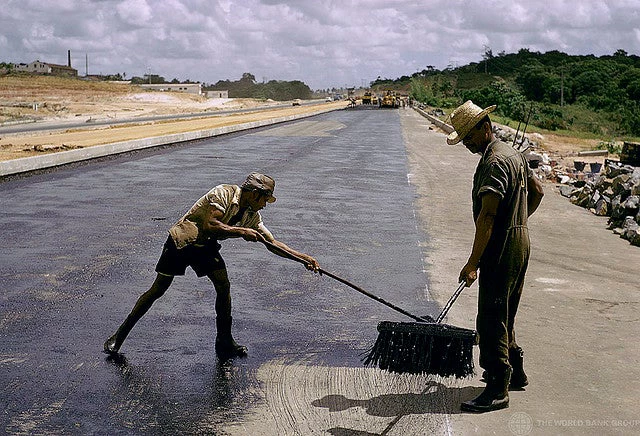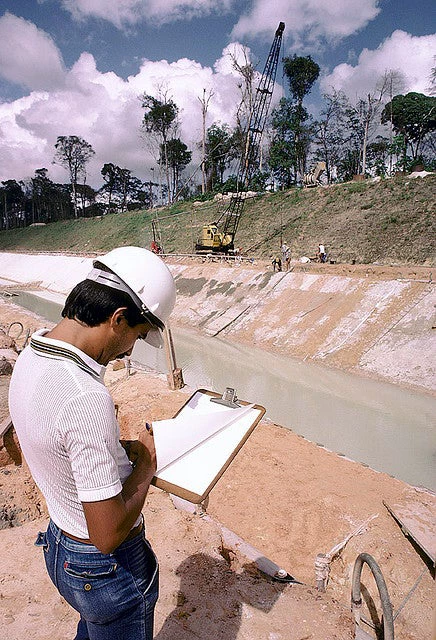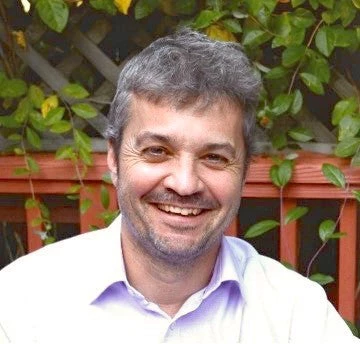
infrastructure investment commitments
drove an overall global increase.
The PPI Database’s 2014 full year update for these sectors has just been released, and it confirms the trends we began tracking for the first six months. Total investment in infrastructure commitments for projects with private participation in the energy, transport, and water and sanitation sectors increased six percent to $107.5 billion in 2014 from levels in the previous year. The total for 2014 is 91 percent of the five-year average for the period 2009-13, which is the fourth-highest level of investment commitment recorded – exceeded only by levels seen from 2010 through 2012.
This increase over 2013 was driven largely by activity in Brazil. Without Brazil, total investment commitments would have fallen by 18 percent, from $77.2 billion in 2013 to $63.4 billion in 2014. Although this is lower than H1 2014 (57%), Brazil’s large stake is a continuation of a recent trend.
The Latin America and the Caribbean (LAC) region saw $69 billion of investment commitments, or nearly 70 percent of the total for 2014. Three of the top five countries by investment commitments in 2014 were from LAC. The top five, in order, were Brazil, Turkey, Peru, Colombia, and India.
The Middle East and North Africa (MNA) region, while having much smaller commitments of $3.3 billion, also saw increases over the previous year. All other regions saw reductions in investment commitments. Sub-Saharan Africa saw a particularly steep fall – from $9.3 billion in 2013 to $2.6 billion in 2014 – because of a drop in energy sector activity. However, it’s important not to read too much into this because 2014’s figure was closer to levels seen prior to 2012. The emergence of activities in countries such as Ghana, Kenya and Senegal is particularly encouraging.
The PPI database update for 2014 also focuses attention on growth and activity by sector. The largest number of new projects was in energy, followed by transport, and finally water and sanitation. Although the energy sector had the most new projects, the sector with the greatest investment was transport, which received $55.3 billion, or 51 percent of total global investment. The energy sector accounted for $48.2 billion, or 45 percent, and the water and sanitation sector had $4.1billion, which was four percent of total investment committed. Greater activity resulted from several large-scale projects in Brazil, Colombia, Peru and Turkey.
 Another trend threading through the PPI Database update is the move throughout the last decade toward fewer but larger projects. At 239, the number of projects was the lowest seen since 2004, but at the same time 2014 also marks the highest average project size ever.
Another trend threading through the PPI Database update is the move throughout the last decade toward fewer but larger projects. At 239, the number of projects was the lowest seen since 2004, but at the same time 2014 also marks the highest average project size ever.
As we noted back in March, while there are some positive takeaways from 2014 activity, given rising investment gaps there should be a redoubling of efforts to build policy frameworks and enhance project preparation. Together, these efforts will strengthen the role the private sector can play in meeting infrastructure needs.
We are gearing up to connect with PPP colleagues next week during the PPP Days event, hosted by the European Bank for Reconstruction and Development (EBRD) in London. Together with our colleagues in EBRD, Asian Development Bank (ADB), Inter-American Development Bank (IDB), Islamic Development Bank (IsDB), United Nations Economic Commission for Europe (UNECE), and European Investment Bank (EIB), we are looking forward to our collaboration around PPP activities and in depth discussions around our collective efforts to answer infrastructure needs – globally, regionally and locally.
Curious about PPPs? It’s not too late to sign up for our PPP massive open online course, and join the more than 20,000 participants who are learning about PPPs. We will also have a live Google Hangout from London next week.
Next week will also bring a few more launches, including the PPP Lab, a new web platform for everything PPP, and our revamped Handshake, the World Bank Group’s PPP journal.
Stay tuned for other developments and ongoing PPP news through our Twitter channel at @WBG_PPP.
For more information: http://ppi.financeandprivatesector.org
Information in the newest Private Participation in Infrastructure Database update covers the period from 1990 to 2014 and reviews more than 6,000 projects across 139 low- and middle-income countries, providing information on private infrastructure investment in emerging markets.


Join the Conversation